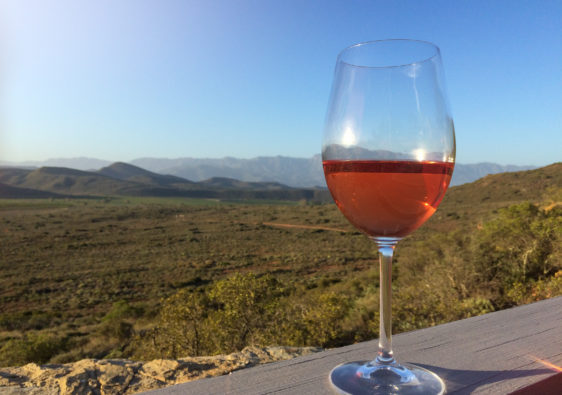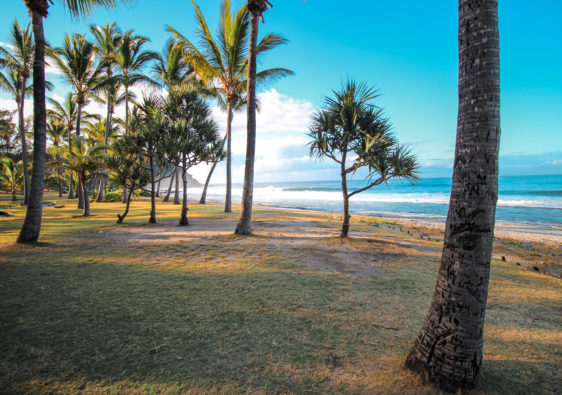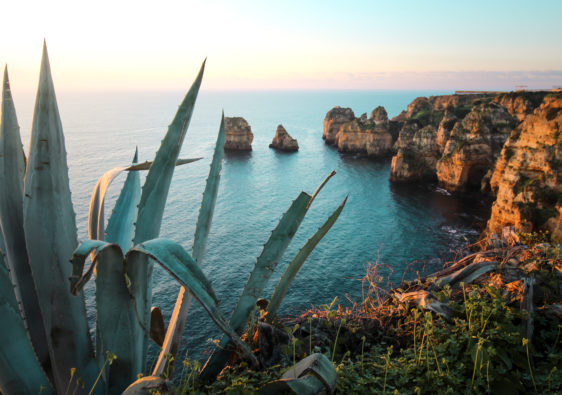When life gives you lemons, make lemonade. Or go to Mexico. That’s what we did when we couldn’t enter the USA directly from South Africa during the COVID-19 pandemic due to bans on virus variant countries.
Even though Mexico was accessible for years while I lived in the States, it was never on my radar. Now that I’ve been, I don’t understand why I didn’t visit sooner. Despite negative connotations around crime and safety, I found Mexico to be far safer than Cape Town, and more on par with safety levels in the US. I never felt nervous walking around the city after dark, whether in Merida, Campeche or Valladolid. I wasn’t afraid to drive around during the day on empty roads. In fact, I found everyone to be extremely polite and helpful. Not the kind of nice where they ask you how you’re doing and don’t care about your response. But the genuine kind of nice. People would stop to help us if we looked lost or out of place, drivers always gave us the right of way as pedestrians, when we cycled drivers also gave us plenty of space, and no one tried to cheat us just because we couldn’t speak fluent Spanish. That said, I think the negative reputation Mexico has is completely unwarranted.
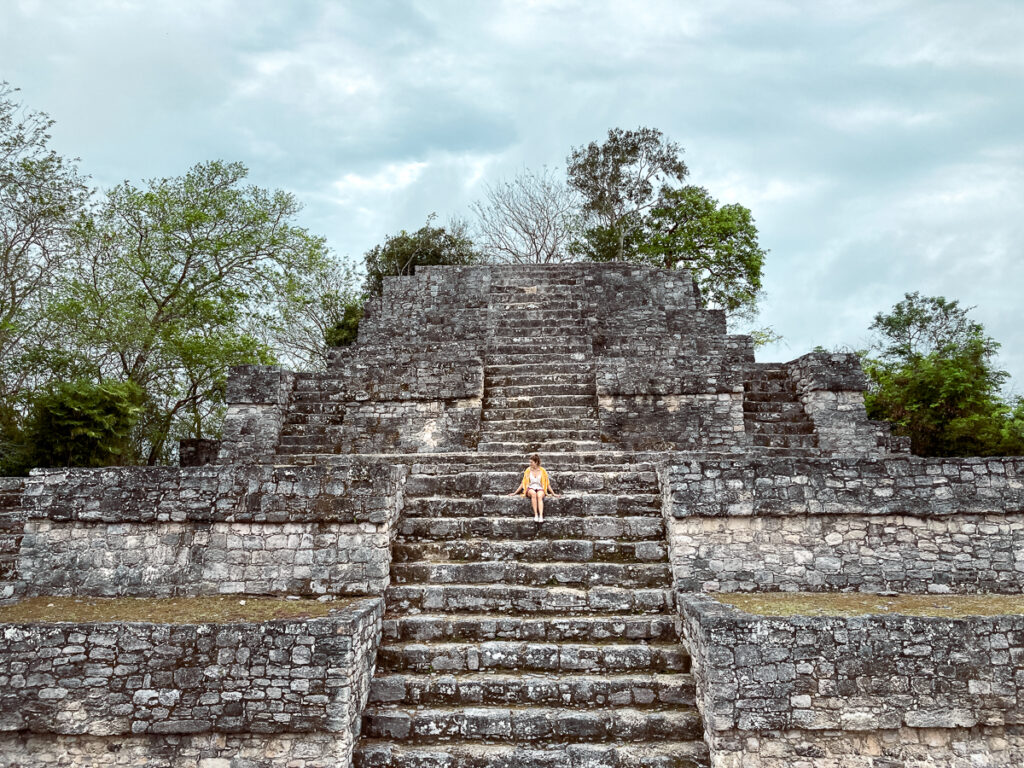
Initially, my plan was to spend one week walking around a ton of Mayan ruins and swimming in cenotes and one week working from an AirBnB. The main holiday goal was to see some Mayan ruins deep in the jungle – Calakmul and Palenque. Unfortunately, I got very sick two days into arriving in Mexico and so we had to shorten the trip. We also arrived right at the start of rainy season, so torrential downpours the first few days of the trip kept us from visiting as many cenotes, beaches and lagoons as we would have liked.
Itinerary
Depending on what you’d like to see, there are different ways you can structure your time around the Yucatan. The driving distances are far with not too much in between, so you might opt to rather choose two cities to base yourself in rather than jump from place to place. In this case, I would say stay in Tulum and Valladolid since there are many different trip options you can take from there.
You’ll notice Cancun is not on the list. This is deliberate. It’s loud, filled with tourists, cluttered with resorts, and there’s nothing Mexican about it. You might as well go to Myrtle Beach and save yourself the flight. These itineraries are for Mayan history and cenotes, not recommendations for where to get trashed.
You can follow one of the below itineraries depending on how ambitious you are.
While we chose to rent a car because we wanted to visit some remote places that public transport didn’t easily reach, it is possible to do all of these trip itineraries using public transport (e.g. buses, collectivos and metered taxis). It will just take a little more time.
Jungle Mayan Ruin Route
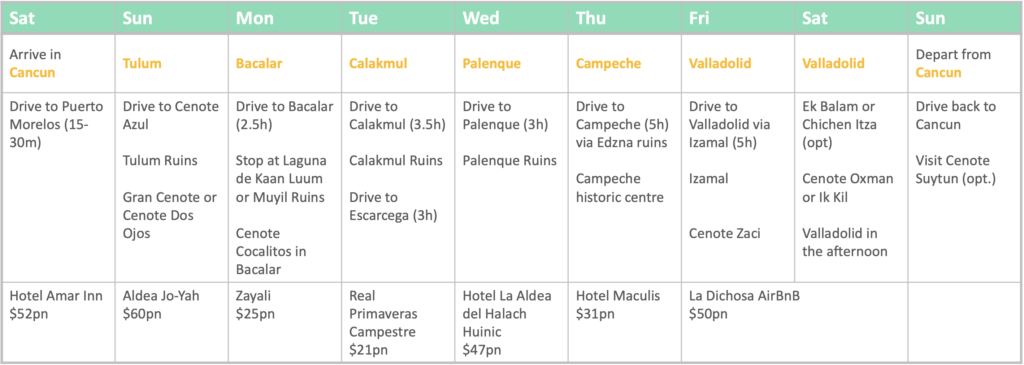
Classics Mayan Ruin Route via Merida
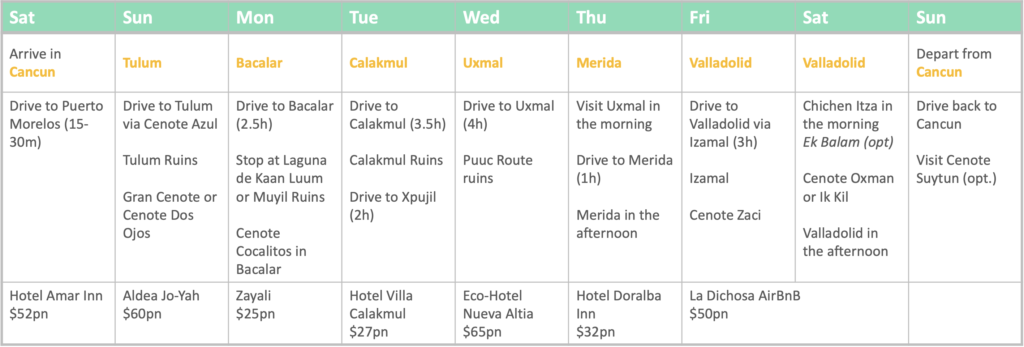
Variation of Classics Mayan Ruin Route via Campeche
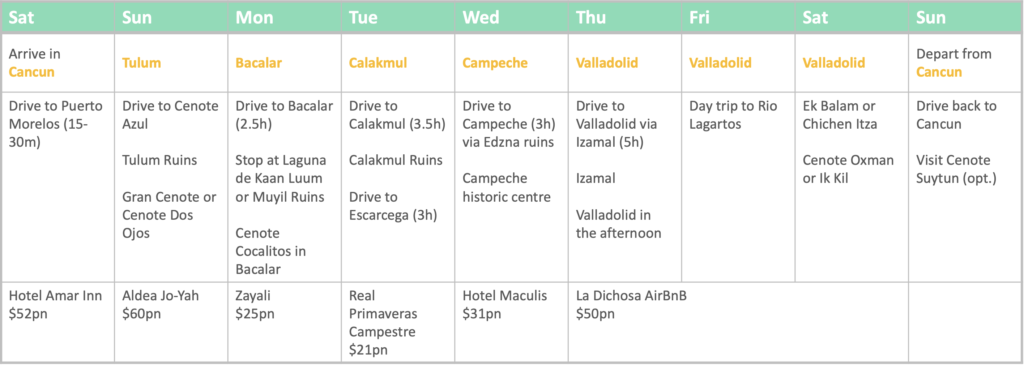
Riviera Maya and Ruins Route

Highlights of the Yucatán
The Yucatan Peninsula has a lot of different sightseeing options, best seen during the dry season. We went during the rainy season and it was not a nice light London drizzle – it was a Monsoon downpour. It also meant high humidity and droves of mosquitos. The flip-side of visiting during this off-peak time is that you won’t have Spring Breakers to contend with at the sites. We never queued once.
If you visit, these were our main highlights.
Mayan Ruins
You cannot visit the Yucatan without visiting the Mayan ruins. Our favourite ruins were the Calakmul ruins and the ruins at Edzna. One pro tip for visiting the ruins to avoid crowds: do not visit on Sundays. Entrance is free for Mexican nationals on Sundays, which leads to more people than normal at the sites. For extremely popular sites like Chichen Itza, arrive at opening time to avoid tour buses (8am).
Calakmul is deep within a jungle just a few miles from Guatemala and only partially excavated. You can climb the pyramids, including Structure II from which you can see Tikal in Guatemala on a clear day. It’s a very different experience to the Tulum ruins (I’ll get back to these) in that you have the ruins practically to yourself, there aren’t no-entry ropes everywhere, and you can hear birds and howler monkeys around you. There are three different routes you can walk to visit the ruins: short, medium and long. In June 2021, only the short and medium routes were open. To do the medium route, take photos, and walk slowly in the humidity, budget about 3-4 hours. The ruins are best visited early morning or late afternoon due to the midday heat and humidity (open 8am to 5pm).
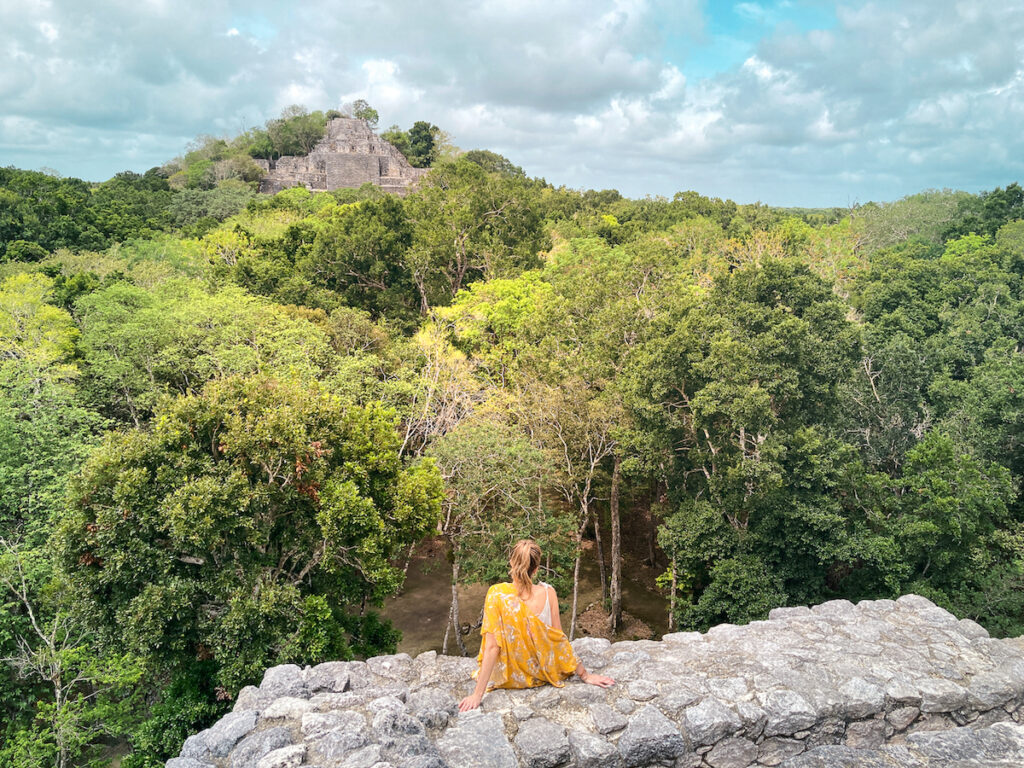
Just be forewarned that to access the Calakmul ruins, you must drive 60km down a narrow winding road. For the last half of the road, you can only go max 30km to avoid collisions with oncoming cars, so it will take you over an hour. Watch out for vines, fallen trees, and potholes on the road.
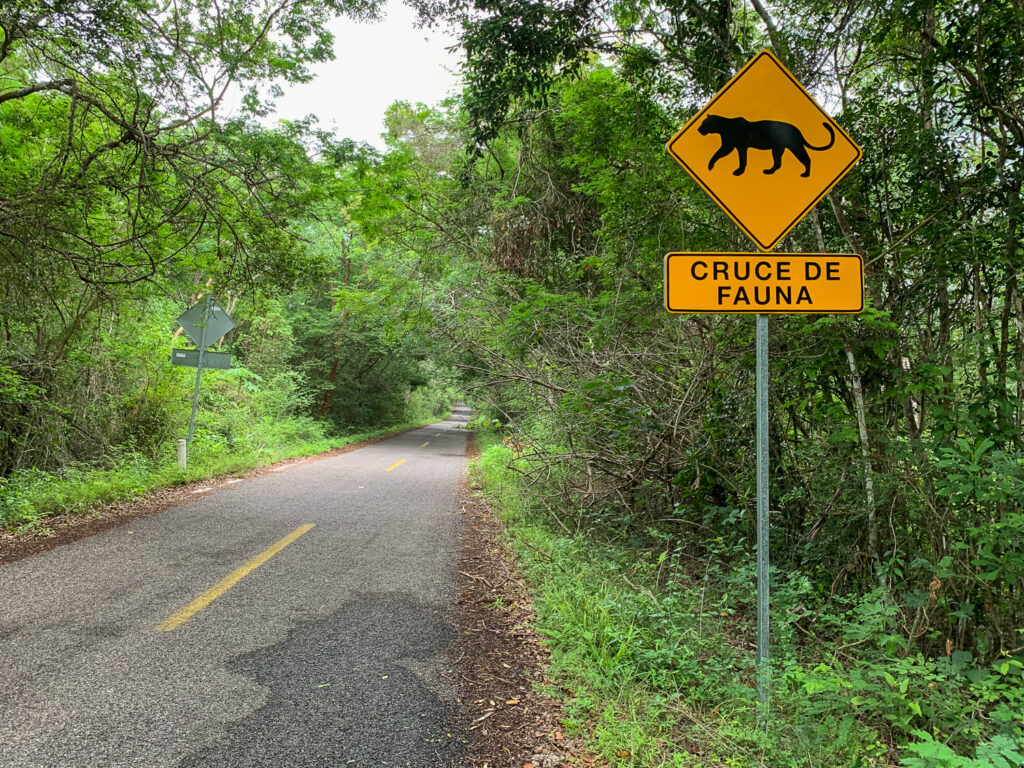
Edzna, on the other hand, is partially restored and you can’t climb the main pyramid, but you can climb other structures for some great views. Behind the ball court area are two large stucco masks that are remarkably well-preserved with paint still visible. You can best access Edzna from Campeche (open 9am – 3pm).
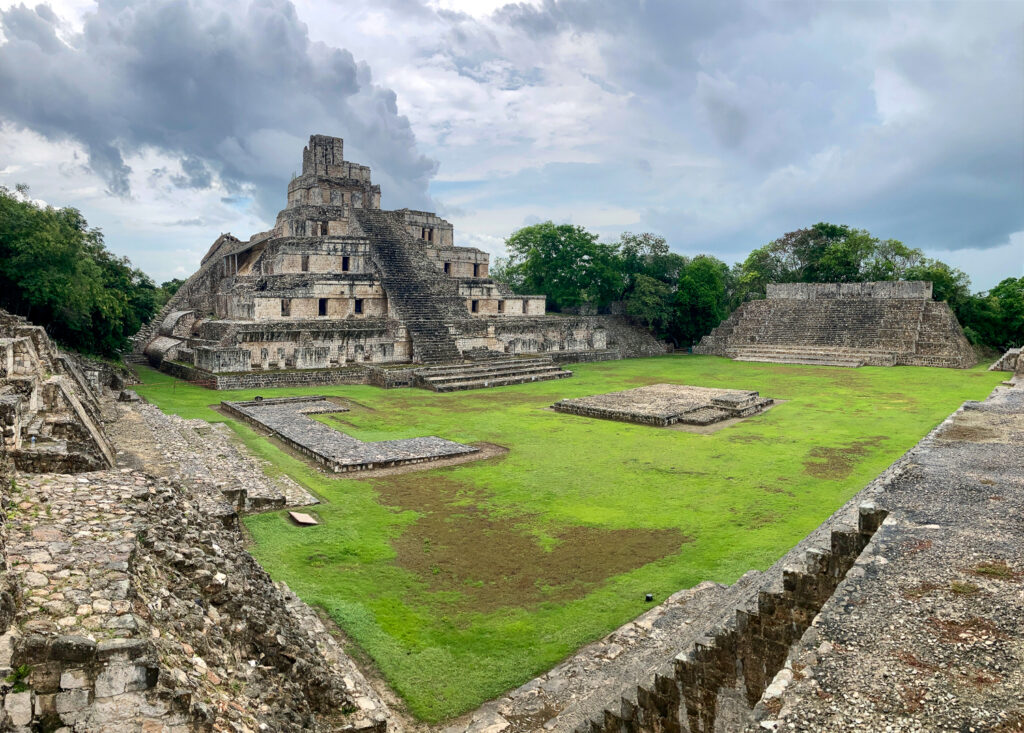
The Tulum ruins are completely underwhelming, in comparison, filled with tourists, ropes, not much of historical interest and a very stinky beach. We chose not to visit Chichen Itza because, though considered historically significant, we thought the experience would be dampened by the hordes of people, the many vendors lining the site, and the exorbitant ticket price. We opted out of Ek Balam because we figured it was like Edzna but more expensive. Nor did we go to Uxmal because a large portion of the site was closed due to COVID-19 and the ticket price was still comparable to Chichen Itza.
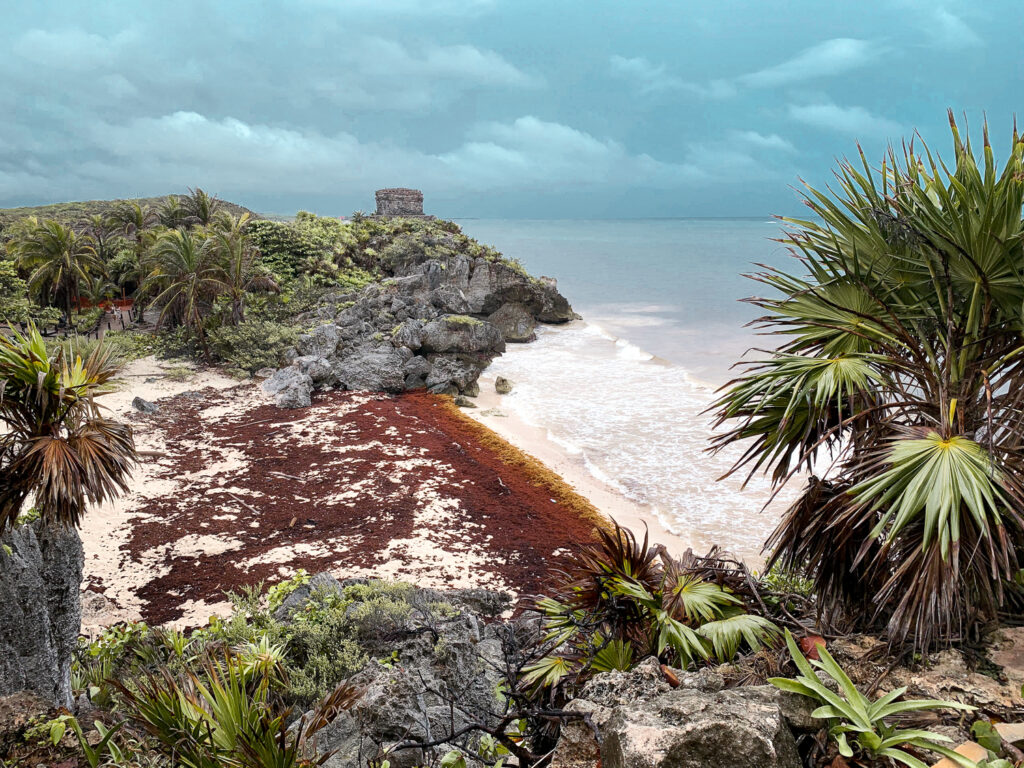
There are many smaller ruins around the Yucatan, such as along the Puuc Route by Uxmal and down near Bacalar and Calakmul, that we weren’t able to visit due to COVID closures. If you visit during normal times, try to seek these out.
Cenotes
The best kept secrets of Mexico, are not the delicious tacos, but rather the cenotes. These are natural sinkholes that form from the collapse of limestone and were used for water by the ancient Maya (and occasionally for sacrificial offerings). Our favourite cenote by far was Cenote Azul on the way between Playa del Carmen and Tulum. It wasn’t too crowded and it had a series of beautiful, crystal clear pools of water surrounded by jungle you could swim and jump into. We were probably the only foreigners there. It’s open from 9 to 5pm and costs 120 MXN to enter.
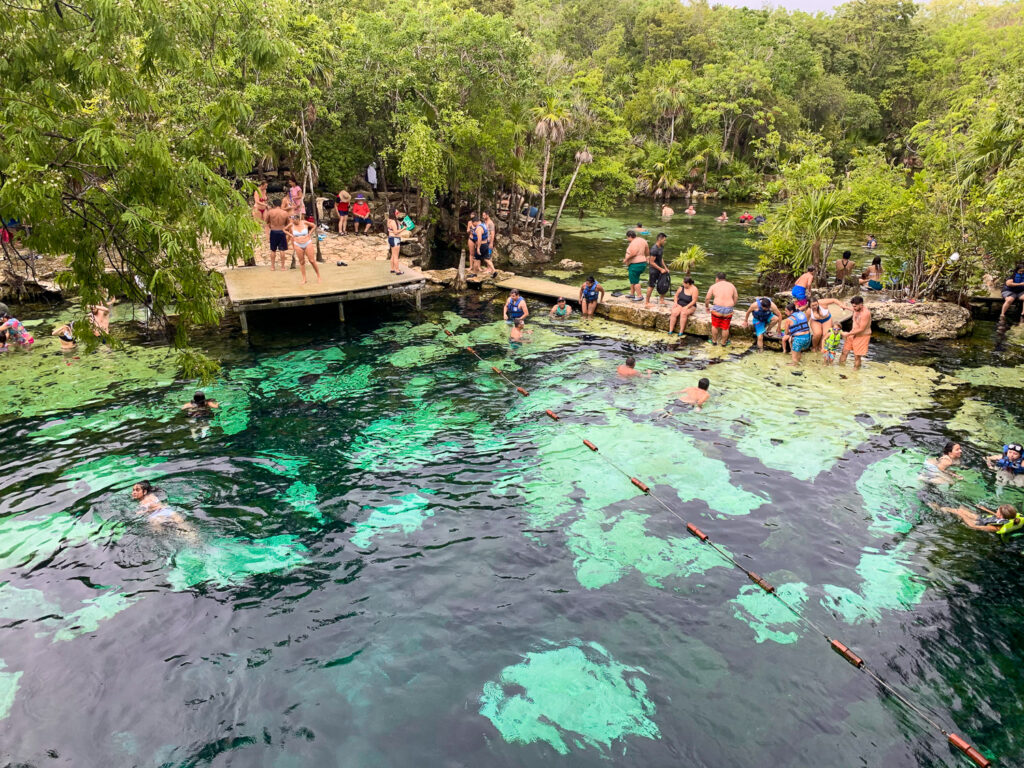
Cenote Oxman and Cenote Ik Kil are quite similar in that they are semi-open cenotes at about 40-50 metres deep. The both cost the same (150 MXN), but Ik Kil is geared up for hundreds of visitors with over 300 lockers and massive changing rooms available. Oxman has a more laidback feel and is next to a hacienda with a swimming pool. It’s also within cycling distance from Valladolid. While Ik Kil is the slightly more picturesque of the two, it also has more rules. There’s a staff member who tells you where you can jump, though if you come early (9-10am), they are more relaxed. Oxman is a lot more chill and has a rope you can swing from into the water. Both require the use of a life vest.
Since both cenotes are quite popular, you’ll want to arrive early. We cycled to Oxman at around 10am and had the cenote practically to ourselves for an hour before it got busy around noon. We arrived at Ik Kil at 9am and were the only people there until 10am.
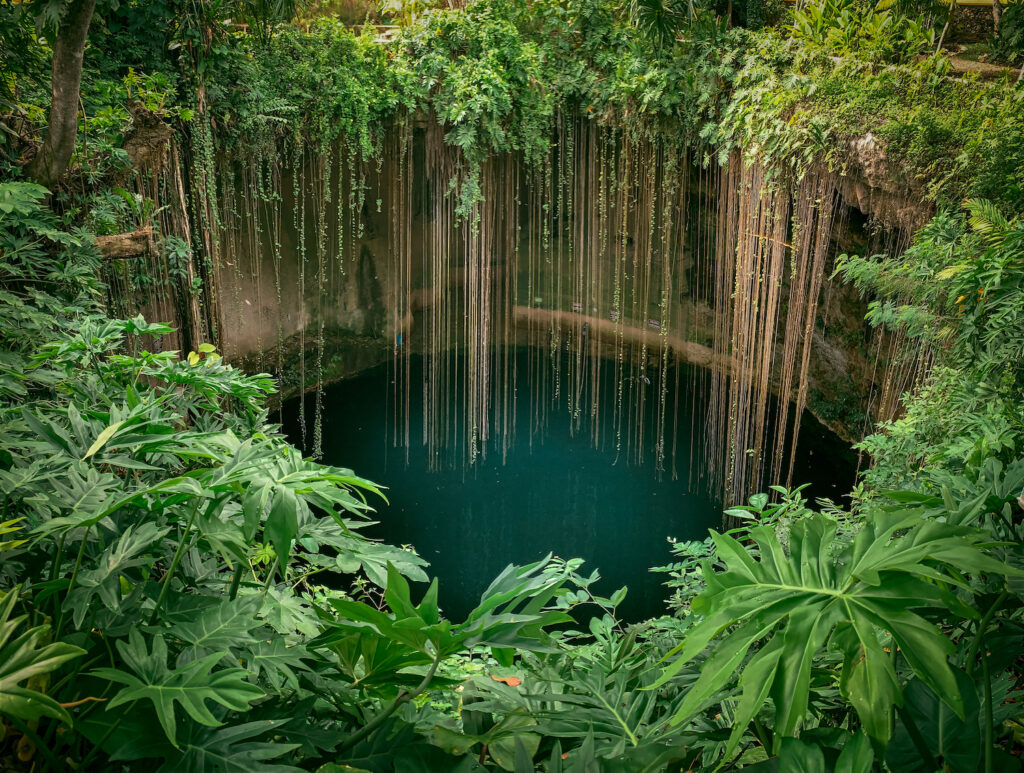
Directly in Valladolid you can visit Cenote Zaci for a mere 30 MXN. It’s a massive semi-open cenote with no real rules. However, because it’s right in the city centre and no one is regulating whether people shower before they get in, the water is a bit murky. I picked up a skin infection after only 5 minutes in the water.
Another fantastic cenote is Bacalar – it’s technically a series of cenotes that are strung together. We visited Cenote Cocalitos which has crystal blue water, hammocks, swings, and a fantastic restaurant with the cheapest prawn cocktail you’ll ever have. I think the entrance fee was around 35 MXN per person. There are other cenotes you can visit around Bacalar, all different shades of blue.
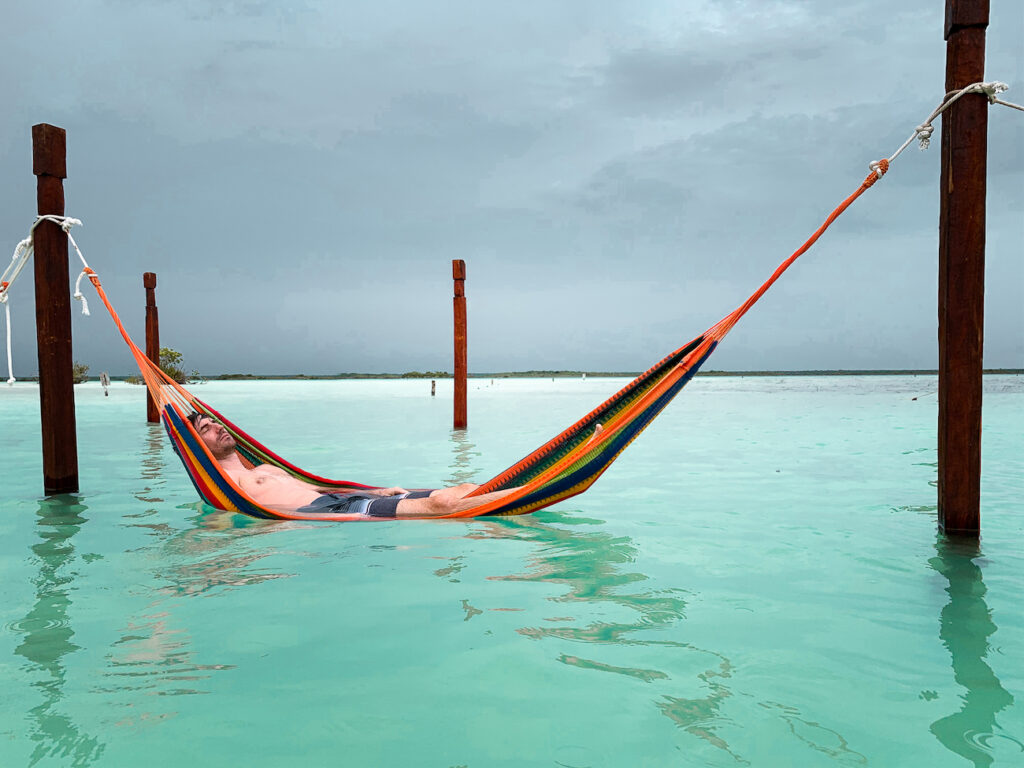
Towns and Cities
In terms of towns, Tulum was a let down. The main town the highway goes through wasn’t particularly interesting and the tourist strip along the ocean was horrific. There were interesting looking shops, but there aren’t any sidewalks for pedestrians anywhere so you’re dodging traffic the whole time. Campeche was surprisingly really nice – it’s very quiet and right near the ocean. The old city streets are beautiful and fun to explore with a cup of cold spicy Mexican hot chocolate in hand from Chocol Ha. Merida was a bit like Campeche in terms of a colourful city centre but otherwise it was a lot busier. I preferred the laidback vibes of Campeche.
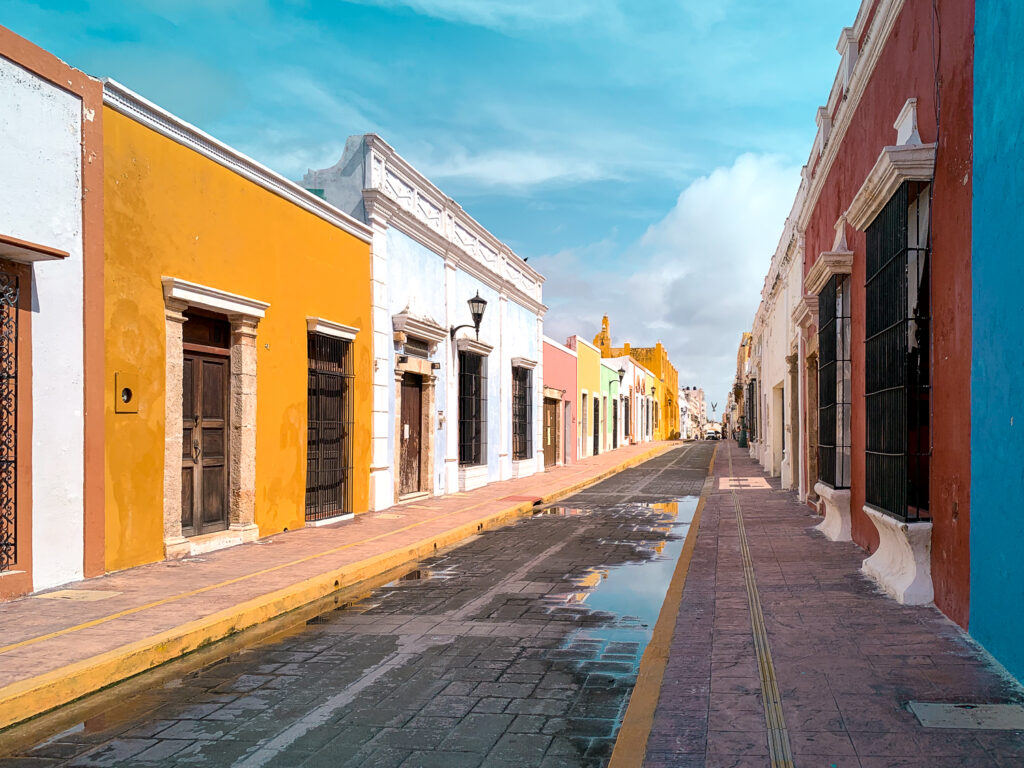
On the way between Merida and Valladolid, lies Izamal – an ochre-coloured town. Pretty much all of the buildings are some shade of yellow. Near the centre of the town is a Mayan pyramid you can climb for a view of the whole town, in all of its yellow glory. Many people pass through here for a quick visit, but it looks like a lovely place to spend the night as opposed to Merida.
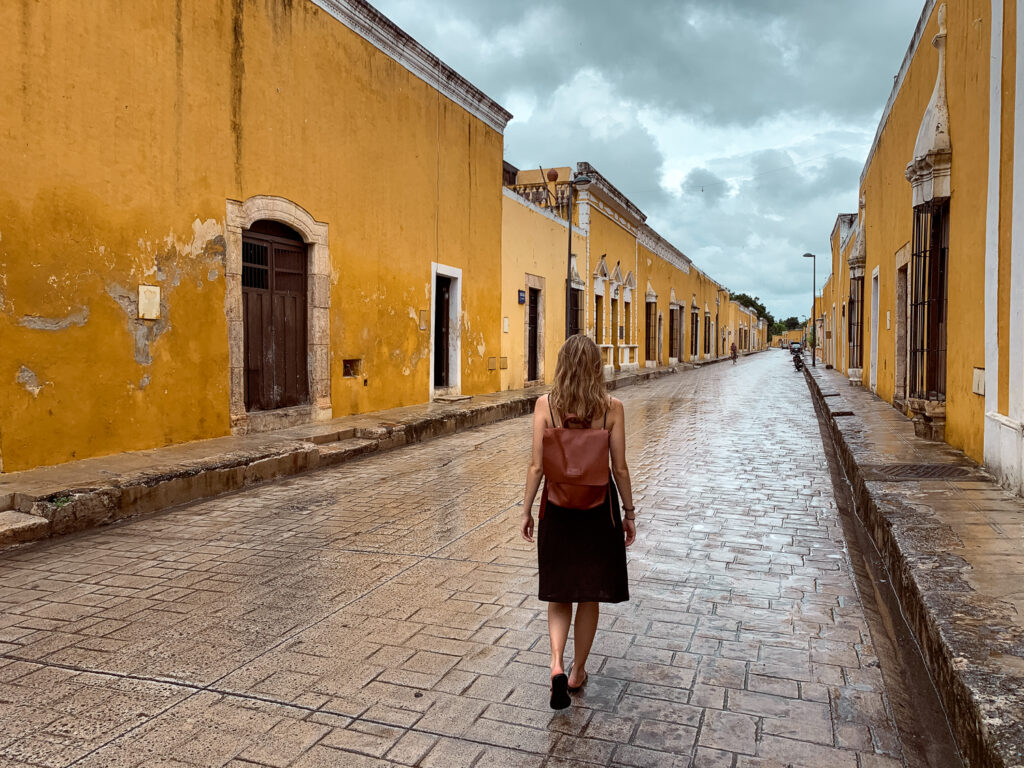
Valladolid was the ideal place to stay for a few days – the town is fun to explore by foot or bicycle and there are a lot of sites of interest nearby (e.g. Ek Balam, many picturesque cenotes like Oxman). Besides the historic core of the city, the rest of the city has a very rural village feel – you’ll find people will greet you as you pass.
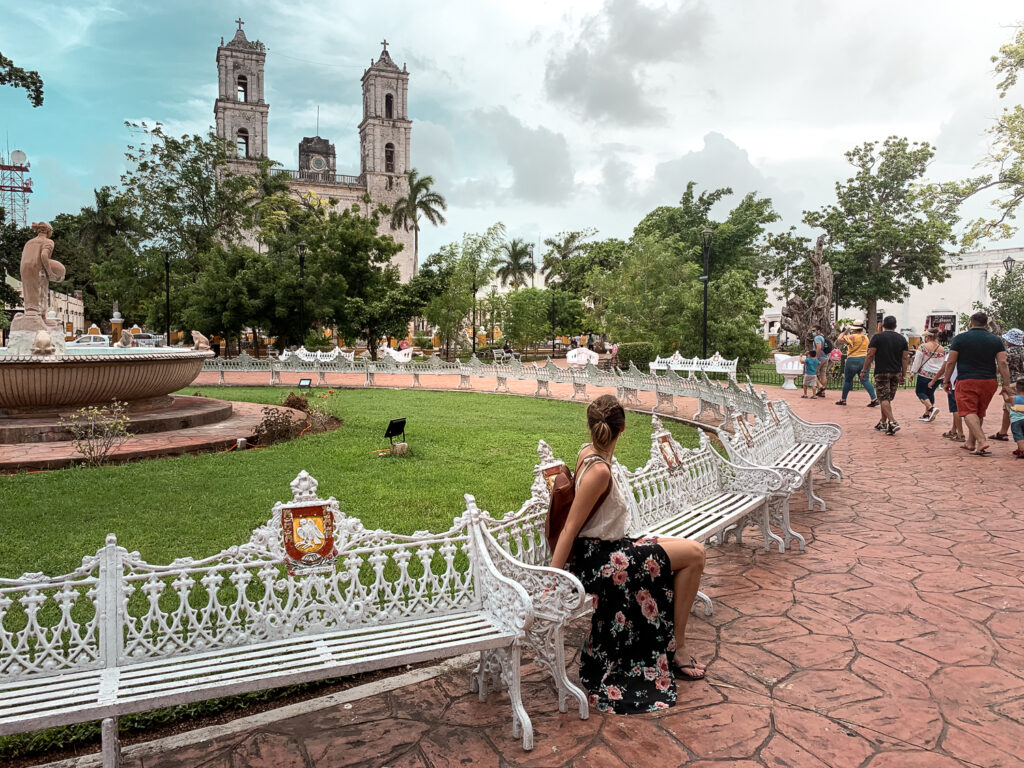
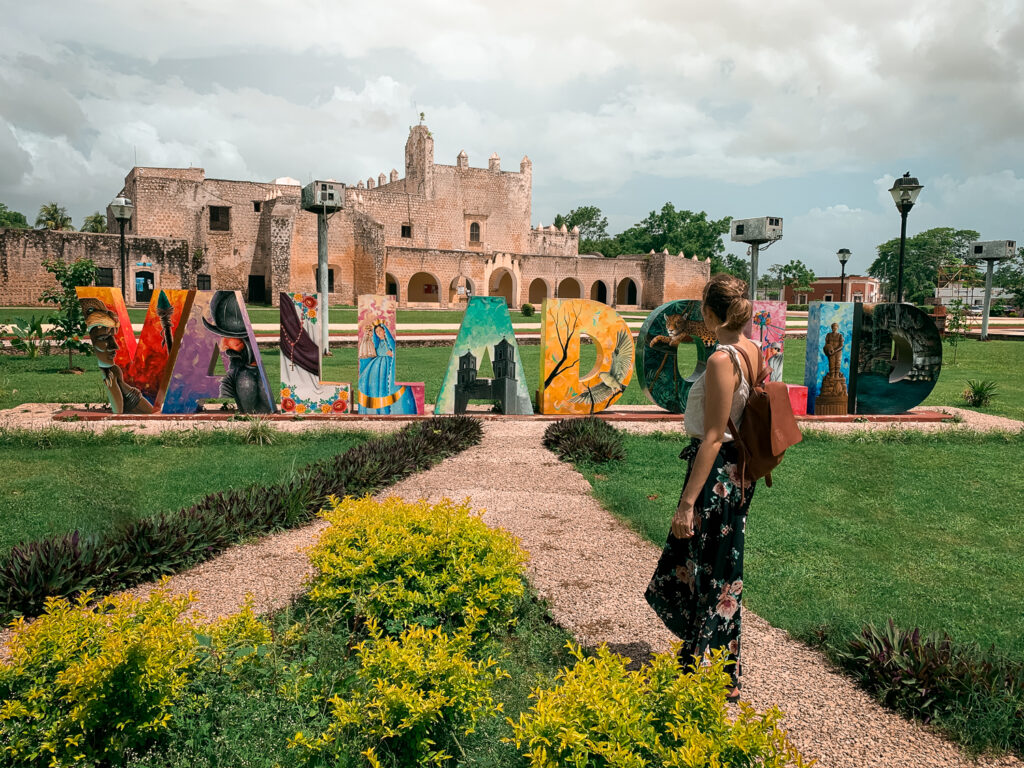
Other Sites of Interest
We didn’t visit the following, but with more time, better weather, and a bigger budget these would have been interesting options:
The Sian Ka’an Biosphere south of Tulum, Celestún west of Merida, and Rio Lagartos north of Valladolid are all coastal nature reserves you can take guided tours through to view wildlife. Isla Holbox, Isla Mujeres, and Cozumel are islands accessible by ferries near Cancun or Playa del Carmen.
Trip Budget
Mexico is relatively affordable – prices are on par with those in South Africa. For two people, for 9 days and 8 nights, we spent less than $1200 in total: accommodation (~$400), car rental (~$340), gas (~$120), food, sites and activities (~$100), souvenirs, etc. That’s less than a stimulus check.
For a comfortable 3-star budget room, you will pay $20-30 per night. A 4-star hotel room is as low as $50 per night. Obviously, if you opt for resorts, you’ll blow several hundred a night, but why would you stay there when you can stay at locally-owned establishments?
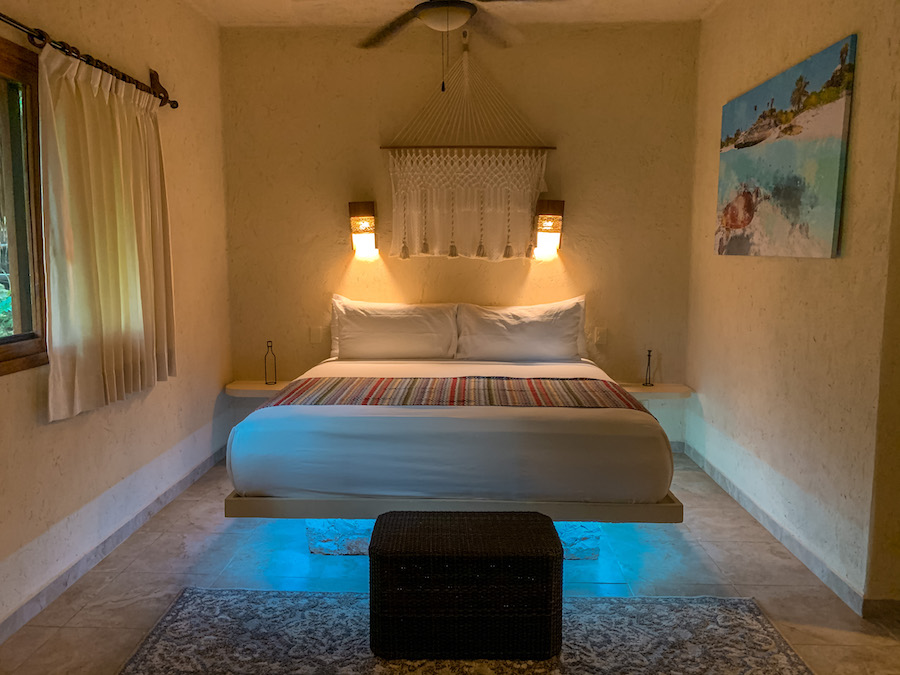
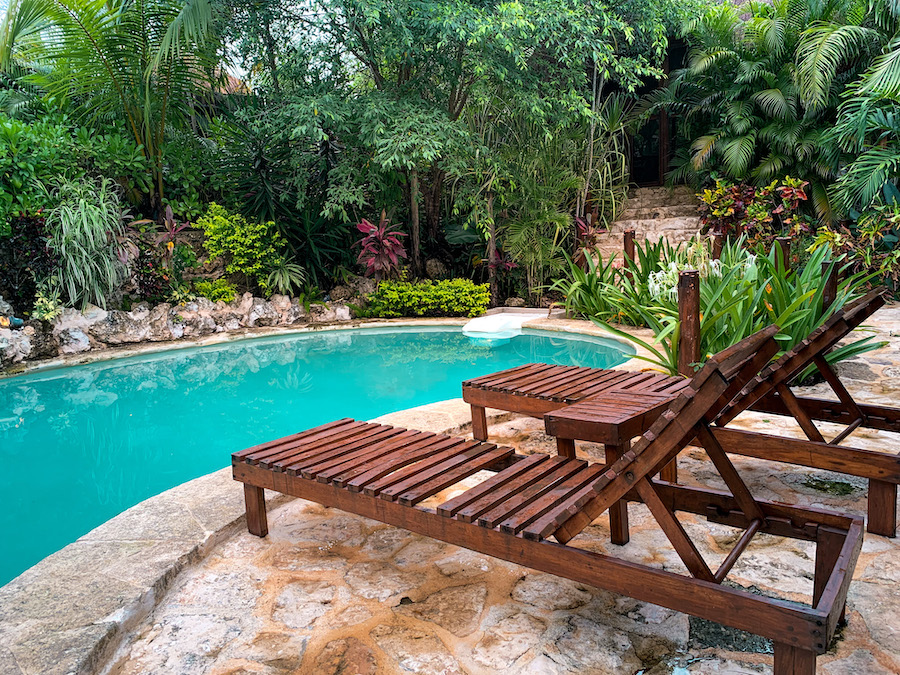
Street food is really cheap. Tacos are less than a dollar each. Restaurants are quite inexpensive as well. For two people for dinner we paid about $12 – 20 total. Most of what we ate though, we bought at the grocery store. We also had breakfast included at most places. In the end, crackers, bananas, and bread was a little easier on a weak stomach.
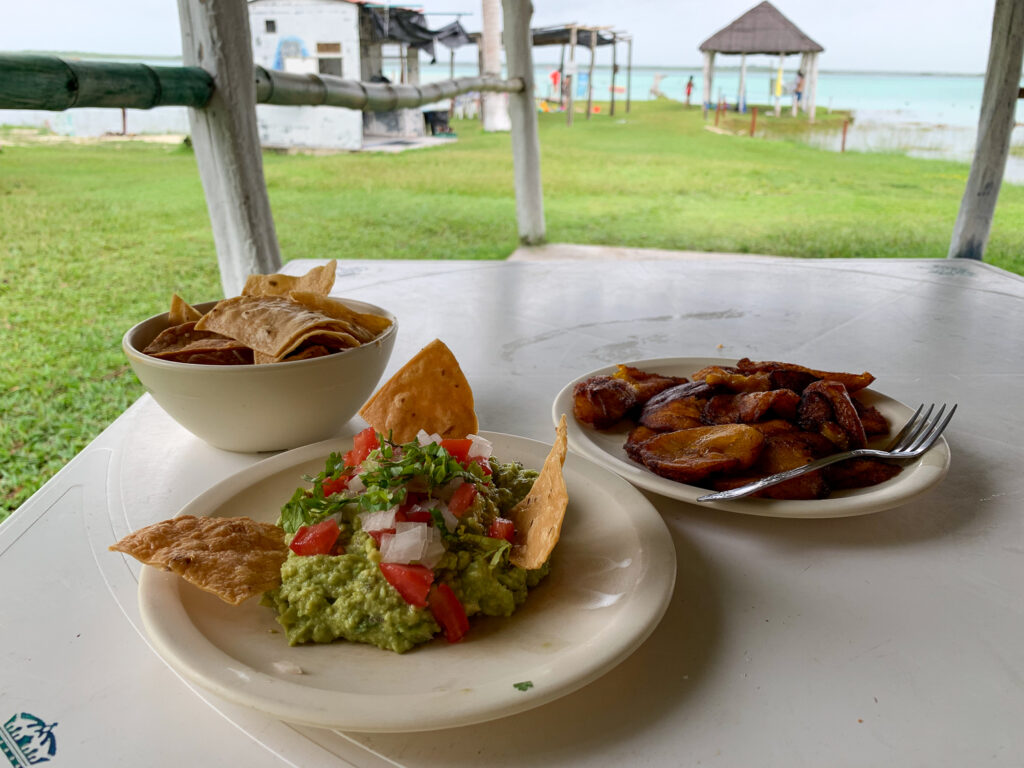
The real cash cows in Mexico are the cenotes and ruins. Some cenotes, such as Gran Cenote by Tulum, charge 300 MXN or more. Chichen Itza charges foreigners a whopping 539 MXN and Ek Balam is 413 MXN. All cash. If you came two years ago, the prices would have been 50% less, but post-COVID the prices have all increased dramatically. Personally, these high prices coupled with the knowledge that these sites would be packed with tour groups was a massive turn-off for me. So I did not go see the most famous Mayan ruin, Chichen Itza. Do I regret it? No, not really. I’ve never been to Disneyland and I wasn’t interested visiting in the Mexican version of it.
Some general costs to know (all in Mexican pesos) as of June 2021:
- Cenote Azul = 120pp entrance fee (parking is free)
- Cenote Zaci = 30pp entrance fee (5 MXN for the bathroom)
- Tulum Ruins = 100 parking, 80pp entrance fee – exact change only
- Calakmul Ruins = 150pp at entrance to road for Calakmul (90 for protected area, 60 for community), 80pp for entrance to the ruins
- Edzna Ruins = 65pp
- Cenote Oxman = 150pp or 250pp with 200 MXN food voucher (food very expensive)
- Cenote Ik Kil = 150pp for cenote, life vest, and locker only
- 21 per litre of Magna gasoline
Renting a Car in Mexico
I read a lot of horror stories about rental cars in Mexico. People showed up with their reservation and their rental car magically wasn’t available, but a more expensive model was. Others were forced to pay $10,000+ as a deposit on the car if they wanted to use their credit card insurance unless they accepted the car rental company’s full insurance. Others just flat out couldn’t rent the car without taking the full insurance from the rental company. Cars were run down and missing spare tires, which upon return of the car, the renter was charged for, even if it wasn’t their fault.
The only insurance that is mandatory, it turns out, is third party liability insurance. Technically, this is supposed to be included in the car rental, but it isn’t always. The mandatory liability amount per accident event varies by state, but in Quintana Roo it’s 350,000 MXN. This translated to 17,000 USD. Since I wasn’t sure about the quality of the roads or drivers in Mexico, this sounded too little to me. So I ended up looking for rentals with 750,000 MXN included or at least an affordable supplemental liability cover.
I panic researched reliable car rental companies for days. Initially, I rented a car with Sixt at the airport through DiscoverCars.com, but I changed my mind after reading reviews on Sixt. Also the mandatory third party liability insurance with Sixt was only 350,000 MXN and it wasn’t clear what the additional charges were for supplemental liability insurance. Additionally, adding a second driver cost 11 USD a day.
In the end, I decided to rent directly with National Car Rental in Downtown Cancun by the Ibis Hotel. I would rent with them again. All of the rentals come with 750,000 MXN in mandatory third party liability insurance, but you can get up to 5,000,000 MXN with the optional supplemental protection.
For an 8 day rental for an intermediate car (Kia Rio Sedan), I paid 3,007 MXN, plus supplemental third party liability protection for 280 MXN a day (2,240 MXN total), plus 90 MXN a day for an additional driver (720 MXN total). In total with taxes, an eight day car rental cost 6,922 MXN.
For the theft and collision insurance, I used American Express Premium Car Rental Coverage for $24.95 for the full rental period. It is a primary insurances and insures the rental car up to $100,000 and is valid in Mexico. Because I declined the car company’s insurance, they placed a hold of about $1500 on my card.
The Kio Rio sedan we received was from 2019, and already had 67,000km on the clock. Despite the condition and minor scratches on the bodywork, it ran fine.
The only two issues we had were the windscreen wipers and the tires. We drove through torrential downpours, as it was rainy season, and the wipers struggled to fully wipe the rain. So we had to drive slowly. Which was fine, because of all the potholes on the jungle roads we were taking. The tires were clearly older and, according to the worker at the tire repair shop, were from 2019. So they were still the original tires. With 67,000 km on them, they were on the last leg of their lifespan. Unfortunately, we had a flat a few days into our road trip, but luckily it happened while we were in Campeche. We found a tire repair shop, and within 5 minutes for 2.50 USD (50 MXN) and not a word of Spanish, our tire was repaired and we were on our way again.
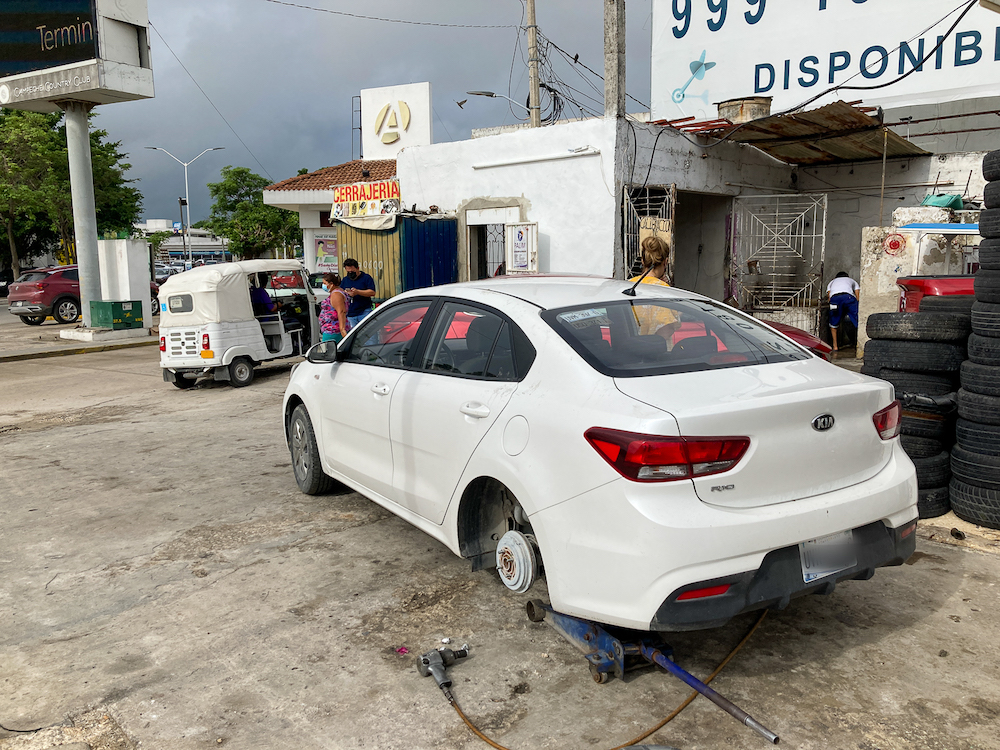
If you choose to pick up the rental car in downtown Cancun, you can get there from the airport quite easily. Take the ADO bus to Cancun Downtown (80 MXN per person, tickets available in the airport or with the driver). Then get a taxi from the bus terminal to Ibis Hotel (or where ever your car is). The taxi for us cost 100 MXN total.
Getting Gas in Mexico
Regular gasoline, called Magna here, costs around 21 MXN per litre. Our rental car used about 6.2 L/100km so we needed a few tanks of gas along the way. It cost roughly 750 MXN to fill up the tank of a Kia Rio sedan (intermediate car).
Many places in Mexico will only take cash for gas. We managed to use our Visa credit card everywhere by using only Pemex gas stations and asking if they take “tarjeta” before filling up. Not all Pemex stations accept Visa and MasterCard, but as rule of thumb, a Pemex in a city or at a major interchange with an Oxxo store or a sign with credit card symbols on a wall will take credit card.
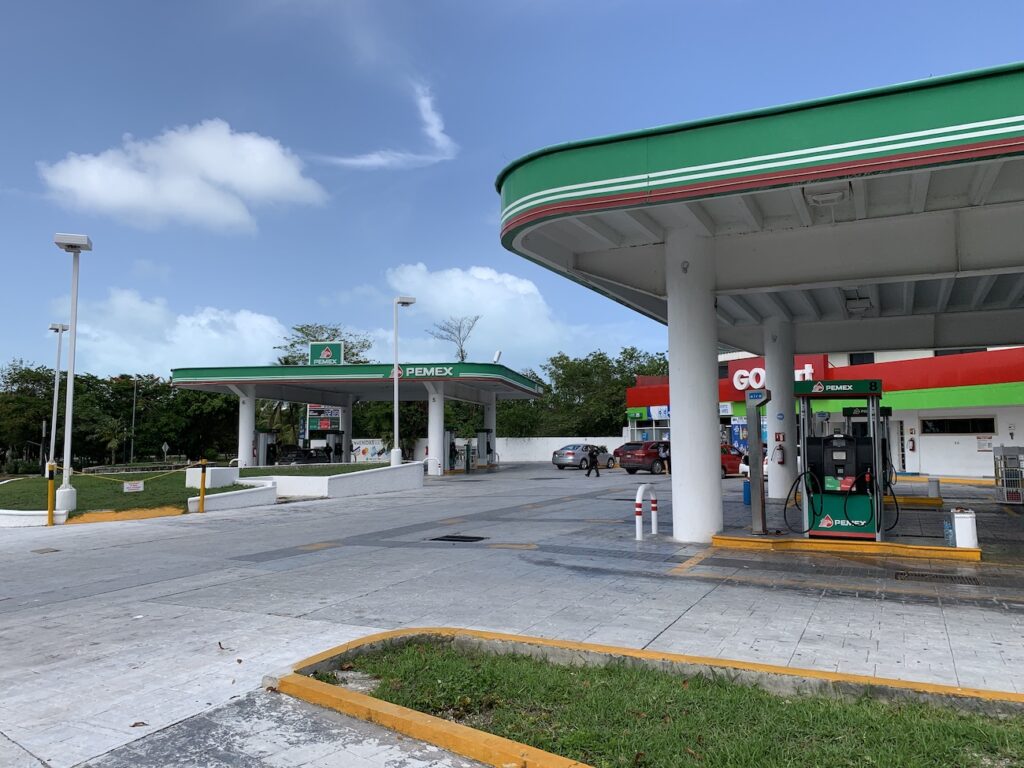
Upon hearing we only speak English, one attendant tested us and told us we could only pay with cash, but I pointed out the sign that said in Spanish that the gas station must accept cards and if they won’t, you should report them. Then he let us pay with card.
If you do fill up with gas, make sure that the gas meter is set to zero before they start filling up the tank. If you do pay in cash, count the money in front of them so they don’t disappear with the cash and come back pretending that you gave them less than what you did. Apparently this happens, but we never personally experienced it.
Useful Apps for Getting Around
Make sure you have downloaded the areas you will visit for offline viewing on Google Maps, so that you can access driving directions without cellphone coverage. If you travel by rental car, you will want these. Tolls can be extremely expensive in Mexico especially on the stretch between Merida and Cancun, so we used the toll-free route function to avoid these. The only toll we paid was 29 MXN by Felipe Carrillo to get to Bacalar from Tulum. When using Google Maps in Mexico, remember it was designed by engineers in Silicon Valley for different conditions and isn’t always accurate in a non-Western context. Always prioritise what the street signs say over Google.
Offline area maps on Maps.Me are useful if you want to visit the Mayan ruins – the paths and buildings are mapped and will help you find your way when the old fading signage around the sites fails you.
If you visit Cancun, unfortunately, Uber is practically useless. Metered taxis do have set prices, but be sure to ask what the cost is to get to your destination before accepting a ride. Otherwise there are buses that service the downtown area (and the ADO bus terminal) and the Hotel Zone. These are R-1 and R-2, and you can find a semi-useful outline of their routes on the Moovit app. I say semi-useful, because the transport information Moovit provides overall on the busses is poor and outdated. The buses run quite regularly and stops are all over the hotel zone, so thankfully you won’t need to rely on an app. They also charge a flat rate of 12 MXN per person, cash only.
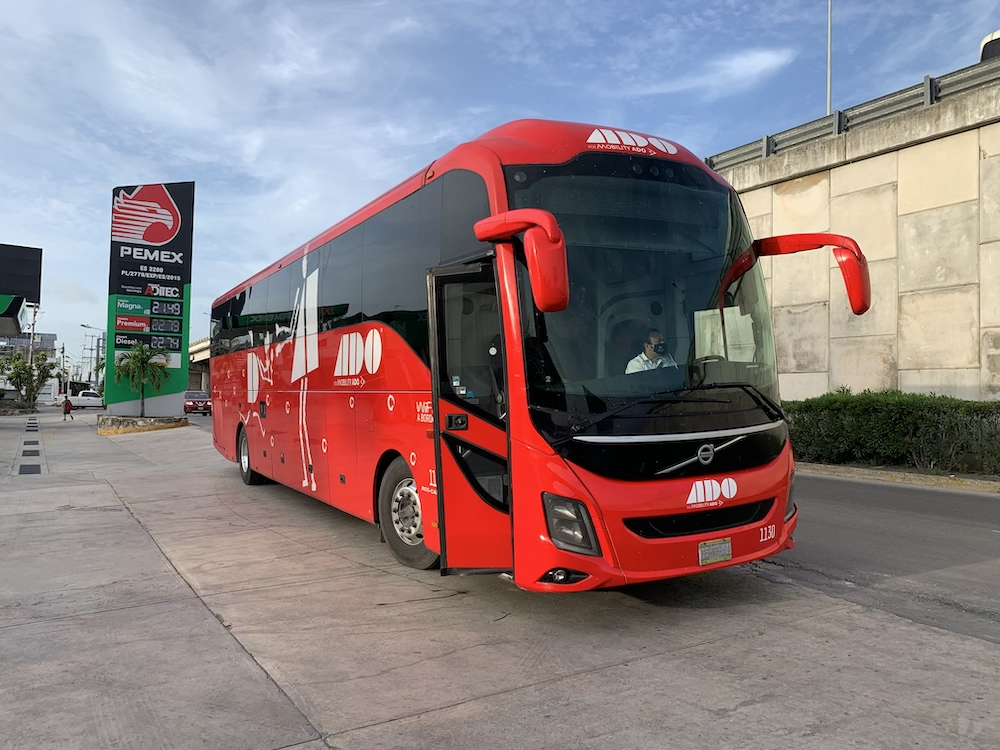
If you choose to get around the Yucatan by bus, ADO busses are the nicest – the seats recline, they are way more comfortable than an airplane, and the bus is well air-conditioned. The only downside is that there’s a movie or music on the whole time, so bring earplugs if you want to sleep. ADO does have their own app, but it’s poorly designed and the information quality is laughable, so I would forgo downloading it. Rather ask around for your destination at the terminal or directly with the driver.
Packing Essentials
Bug repellent and insecticide are your best friends. There are many mosquitos and creepy crawlies in the humid tropics of the Yucatan. You won’t be able to use the mosquito repellent on your skin before you enter cenotes, so you will get destroyed while splashing around there, but in the evenings you will want to dose yourself in spray. Bring more than you think you need. Raid insecticide helped us fend off multiple ant invasions which crop up out of nowhere as soon as you eat anything.
Sunscreen is an absolute must as the sun is extremely strong here. Ideally a sport version is best given you will sweat a lot.
For the greater part of the trip I lived in flip flops. Whether to cross the swamps that materialised on the roads every time it rained or to stay cool in the blistering heat and humidity, open-toed shoes were a lifesaver.
Sleeveless clothing and loose baggy pants will save you from mosquitos and the extreme humidity.
You will need cash for pretty much everything in Mexico – restaurants, Mayan ruins, cenotes, buses, parking, etc. A bank card that has a good exchange rate and low withdrawal fees is essential. I use my Monzo card whenever I go abroad which doesn’t charge any fees for up to £200 withdrawal abroad per month, and after that only 3% on withdrawals. N26 and Revolut function similarly.
Tap water is not drinkable in Mexico, so you will need purified or bottle water for drinking, brushing your teeth, etc. You can buy bottled water everywhere, but bring some purification tablets as a backup.
Visa Requirements
Passport holders or holders of a valid permanent resident card from from the United States of America, Canada, the United Kingdom or any of the countries comprising the Schengen Area do not require a visa.
All foreign visitors, regardless of their nationality, traveling to Mexico for tourism, business or in transit to another destination, are exempt from presenting a Mexican visa as long as they have a valid visa issued by any the following countries: Canada, Japan, the United States of America, the United Kingdom or any of the countries comprising the Schengen Area. This means, if you have a South African passport but you also have a valid US tourist visa, you do not need to apply for a Mexican visa.
A printed and filled out Mexican tourist card is required for boarding your flight and entry into Mexico. You will need to present this card upon leaving Mexico.
Want to extend your trip, but no holiday left?
After our one week vacationing in Mexico, we spent another week at an AirBnB in Puerto Morelos on a working holiday. Puerto Morelos is an ideal place to work from because of the proximity to the beach and international airport in Cancun and amenities like supermarkets. While it’s technically a city, it feels more like a village with spider monkeys swinging from trees and neighbourhood food stalls in locals’ garages. Because Puerto Morelos lacks the infrastructure of larger cities like nearby Cancun, the Internet speeds are slower, though you can still get a Zoom call in. We stayed at a two-bedroom complex with pool access for $33 per night, within walking distance from everything we needed.
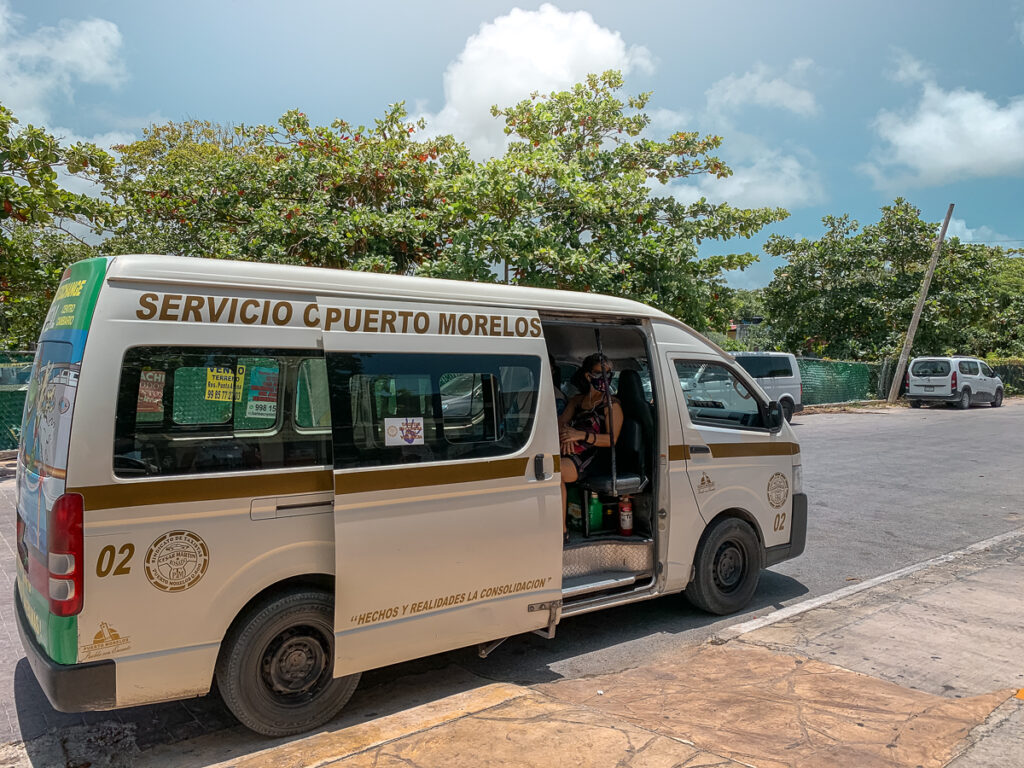
You can catch the colectivo (R-1 or R-2) to the beach in Puerto Morelos for 10 MXN right from outside the Alborada estate (wait by the gate). The colectivo comes fairly frequently so you shouldn’t wait more than 10 minutes. It takes about 10 minutes to get to the beach. Pay your fare in cash as you board or as you exit the vehicle. Down at the beach you can go snorkelling for 350 to 400 MXN. Find a boat by heading over to the pier. The total trip is about 1.5 hours.

